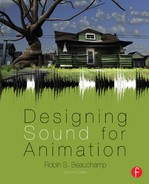LIST OF FIGURES AND TABLES
FIGURES
TABLES
Audio Specifications for Theatrical and Home Theater Release Formats |
|
..................Content has been hidden....................
You can't read the all page of ebook, please click here login for view all page.
